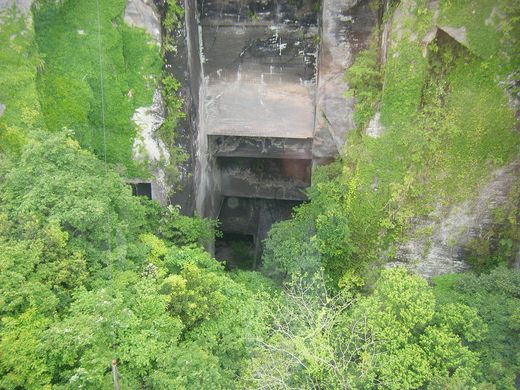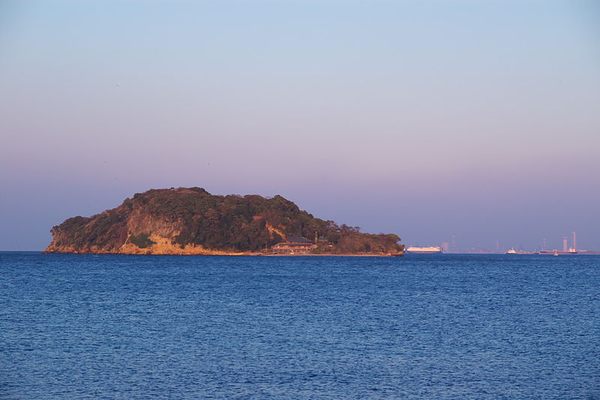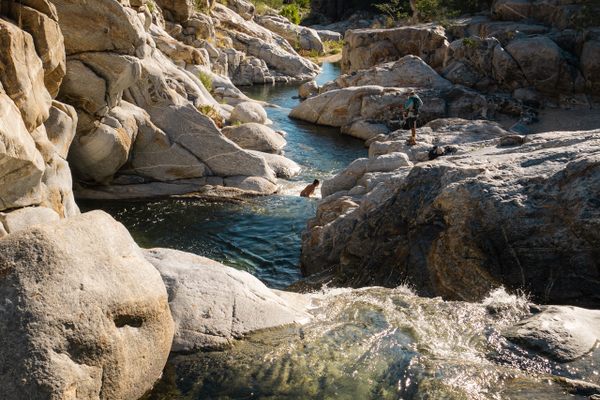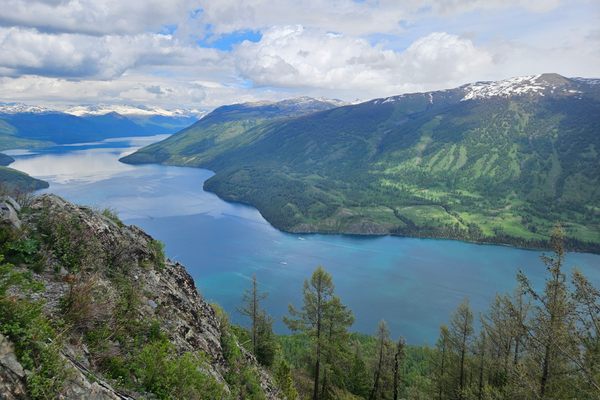AO Edited
Mount Nokogiri (Saw Mountain)
This sawtooth mountain range still bears the strangely lovely marks of its history as a medieval quarry.
Today, Mount Nokogiri is a popular tourist destination known for its spectacular views. Visitors can take the ropeway to the mountaintop to view Tokyo Bay, see Japan’s largest pre-modern stone Buddha, and peer down a jutting section of cliff known as Jigoku-Nozoki, literally meaning “Glimpse into Hell.” But taking the hiking trail from the north will provide a glimpse into what life was like on the mountain in the Edo period (1603-1868).
Even after the nearby Nihon-ji Temple was founded in 725 AD, it was nearly a millennium before people other than priests and pilgrims visited Nokogiri-yama, or Mount Nokogiri. It literally means “saw mountain,” and this name was given to it due to the ridge line’s resemblance to a traditional Japanese saw. The oldest record of this name dates back to the Muromachi period (1336-1573), during which the large-scale quarrying on Mount Nokogiri started.
By the Edo period, the mountain had become home to a major stone quarry for the region. It was notable for the production of Bōshū-ishi, a tuffaceous sandstone exclusive to Mount Nokogiri. The massive stones cut from the cliff over the centuries further accentuated its severe appearance and the sharp line its profile cuts, jutting up from the forest below.
In the 18th century, thousands of stonecutters and artisans lived on and around Mount Nokogiri, and they left their mark in more ways than one. They carved an impressive relief of Kannon, the goddess of mercy, as well as the aforementioned Great Buddha of Nihon-ji Temple, and left many (reportedly over 1,500) small stone rakan, or arhats, around the south side of the mountain. Most of these small statues were beheaded during anti-Buddhist campaign of the Meiji restoration and while many have been restored, others still have rough rocks where their heads once were or continue to sit headless.
Even in more modern times, the stones quarried from Mount Nokogiri were used for many significant buildings, including the port of Yokosuka, Tokyo Bay Fortress, Yasukuni Shrine and Waseda University. But the quarrying came to a halt in 1985, due to nature conservation concerns, and the mountain was then developed as a tourist attraction.
To see the old glory of Mount Nokogiri, it’s better to hike up the mountain than to take the ropeway. That way, you can follow old cart paths (Shariki-michi) where the cut stone was brought down off the mountains. The paths themselves are often cut directly through massive boulders, and the ruts from the stone-laden carts are still visible in bedrock. Arriving at the cliffs, visitors find a rudimentary open-air temple carved directly into the cliff face where the stonecutters could worship.
Also notable for its appearance is the old quarry, which is often compared to the ruins of an ancient temple or shrine. Sharply cut out of the cliff, it almost looks like a modern architectural wonder. One of the cliff-carved quarries is even officially dubbed the “Laputa Wall,” in reference to the Studio Ghibli film Castle in the Sky.
Know Before You Go
Mount Nokogiri is easily reached via Hama-kanaya Station along the Sotobō line. From there, you can follow signs to one of a few hiking trails or to the ropeway direct to the top of the mountain. The ropeway is open from 9 a.m. to 5 p.m., and the round trip will cost 950 yen for adults (500 yen for a one-way trip).
Like many mountain hiking trails, you may encounter wasps and vipers, in addition to flies and mosquitoes and such, and the trails can be slippery, so remember to stay alert.






































Follow us on Twitter to get the latest on the world's hidden wonders.
Like us on Facebook to get the latest on the world's hidden wonders.
Follow us on Twitter Like us on Facebook